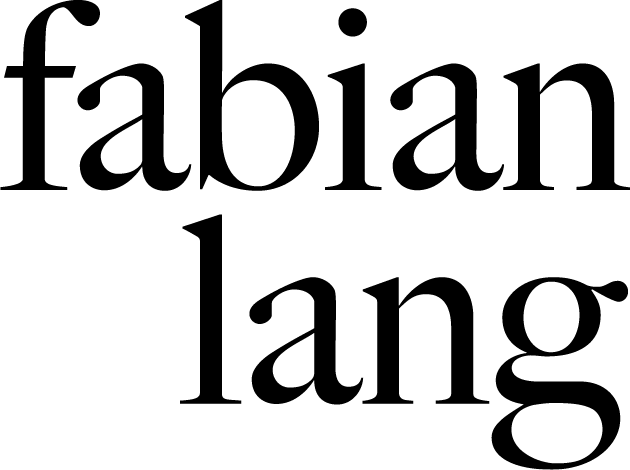KILIAN RÜTHEMANN
LAG
17 September - 8 January 2022
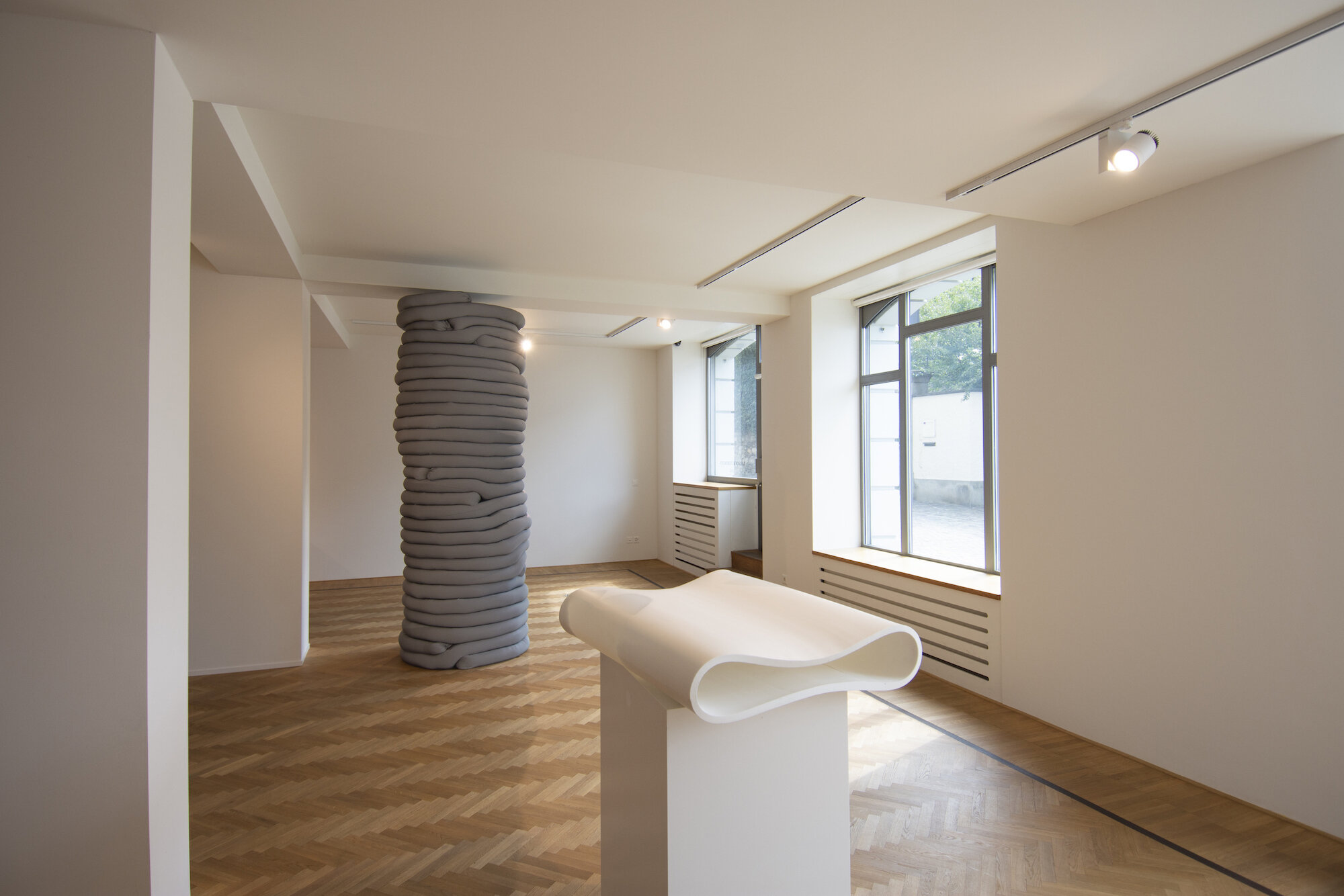
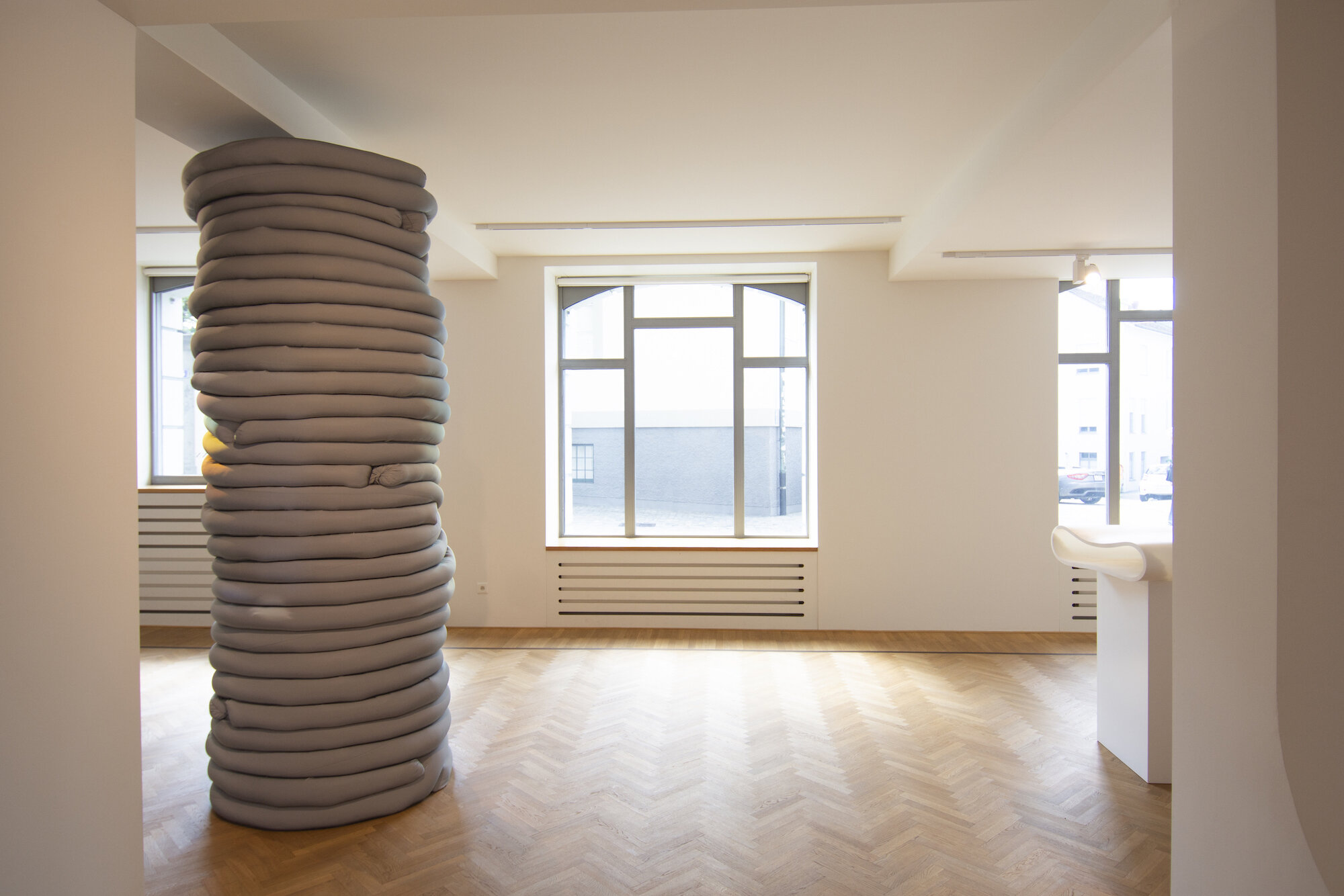


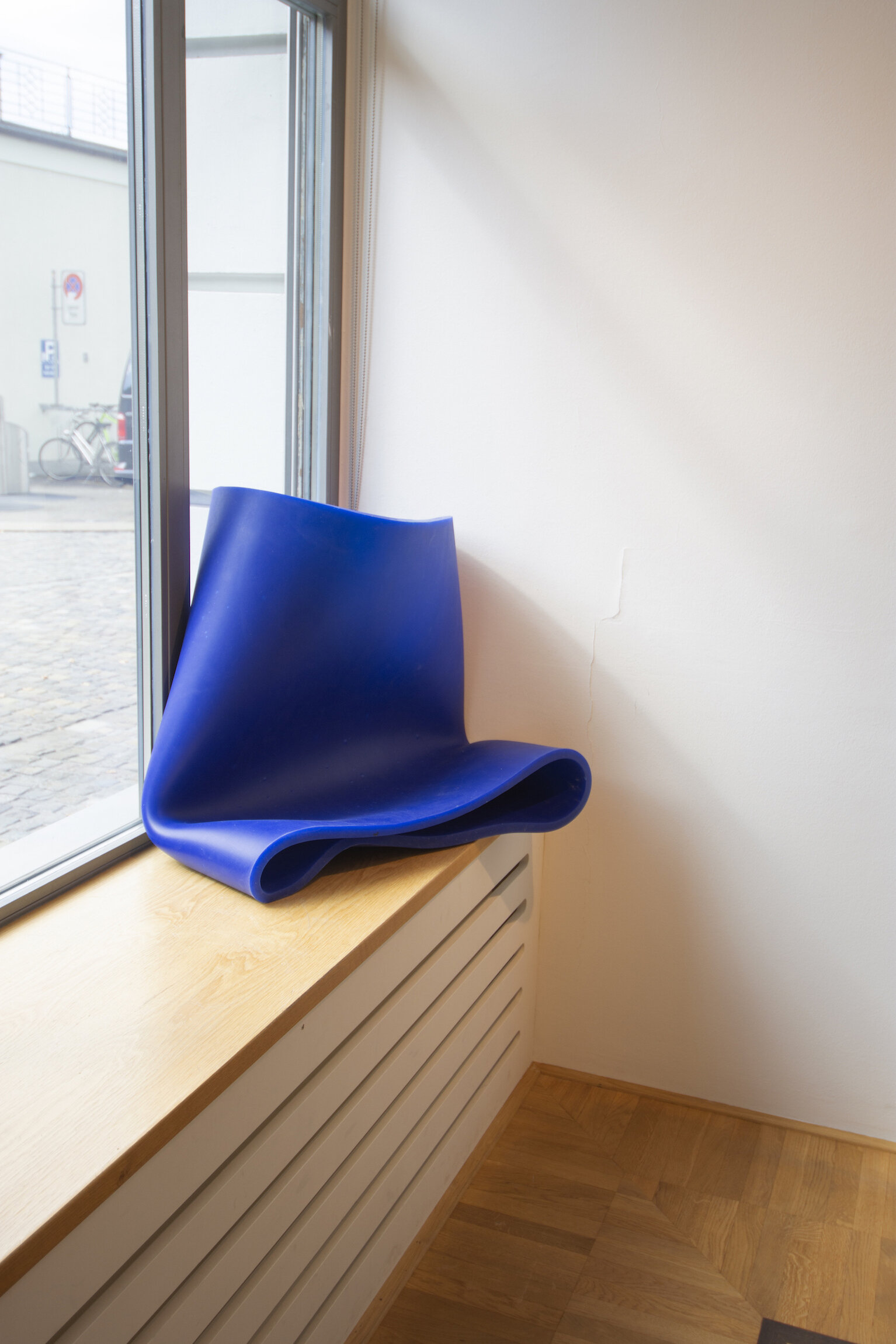
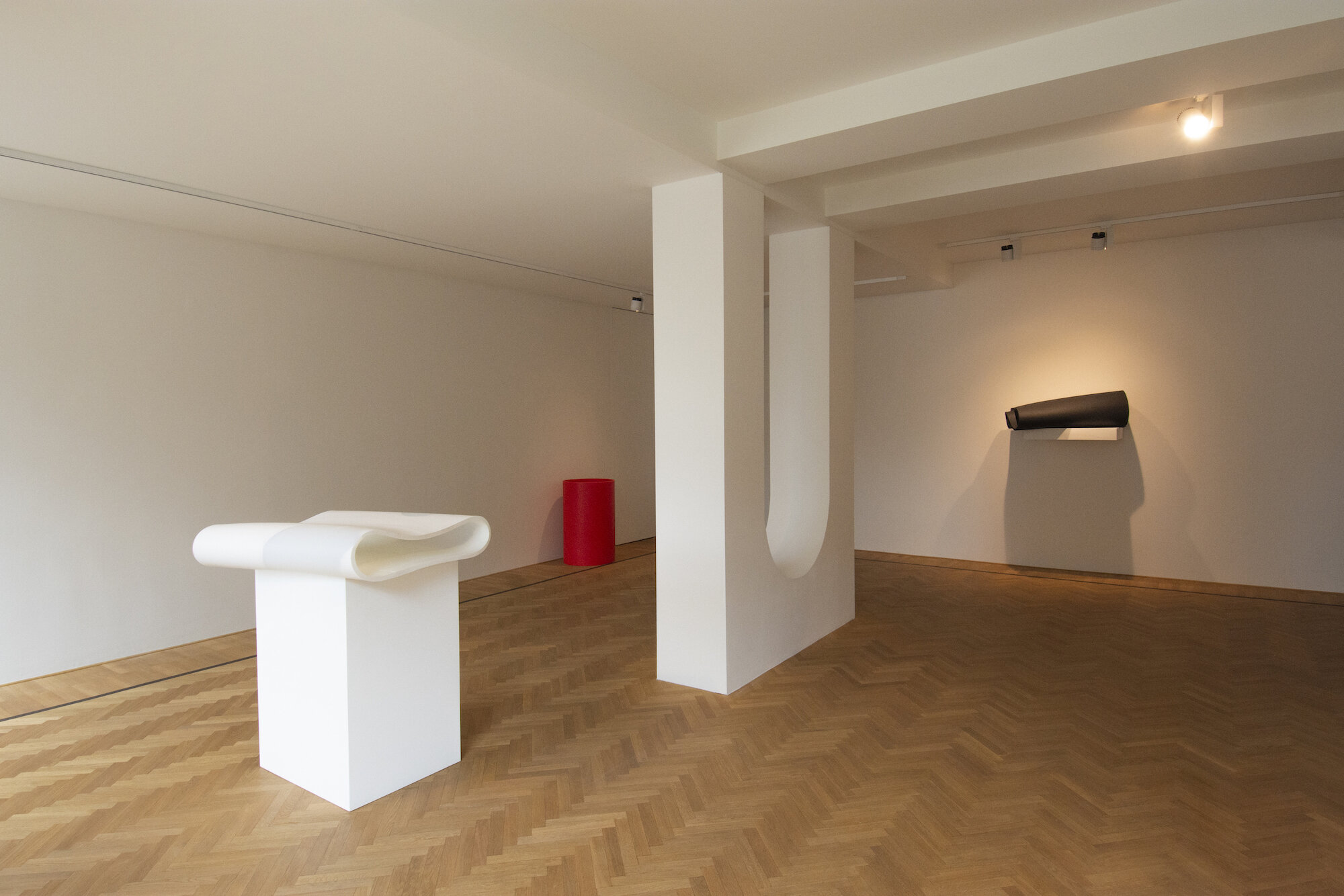

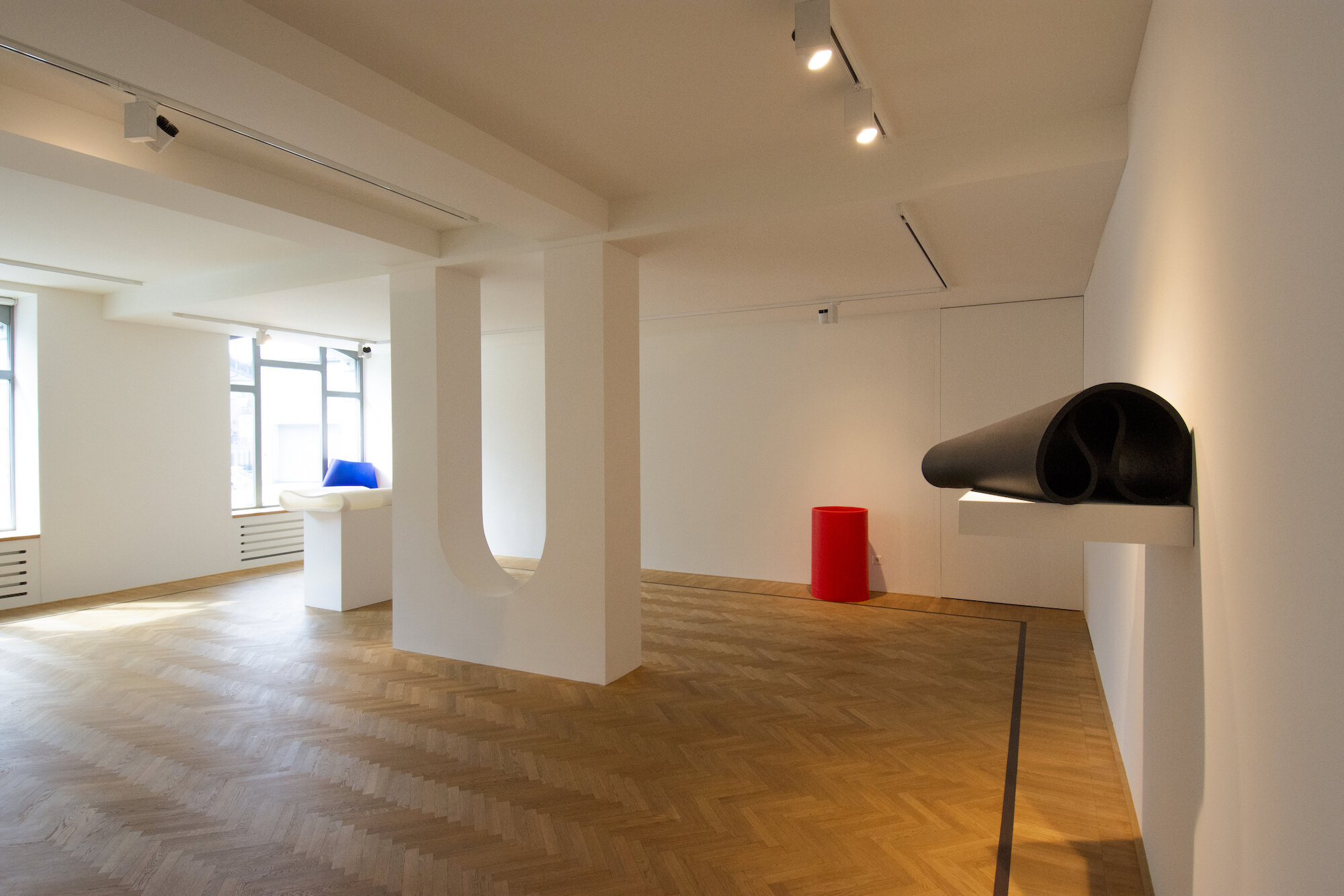
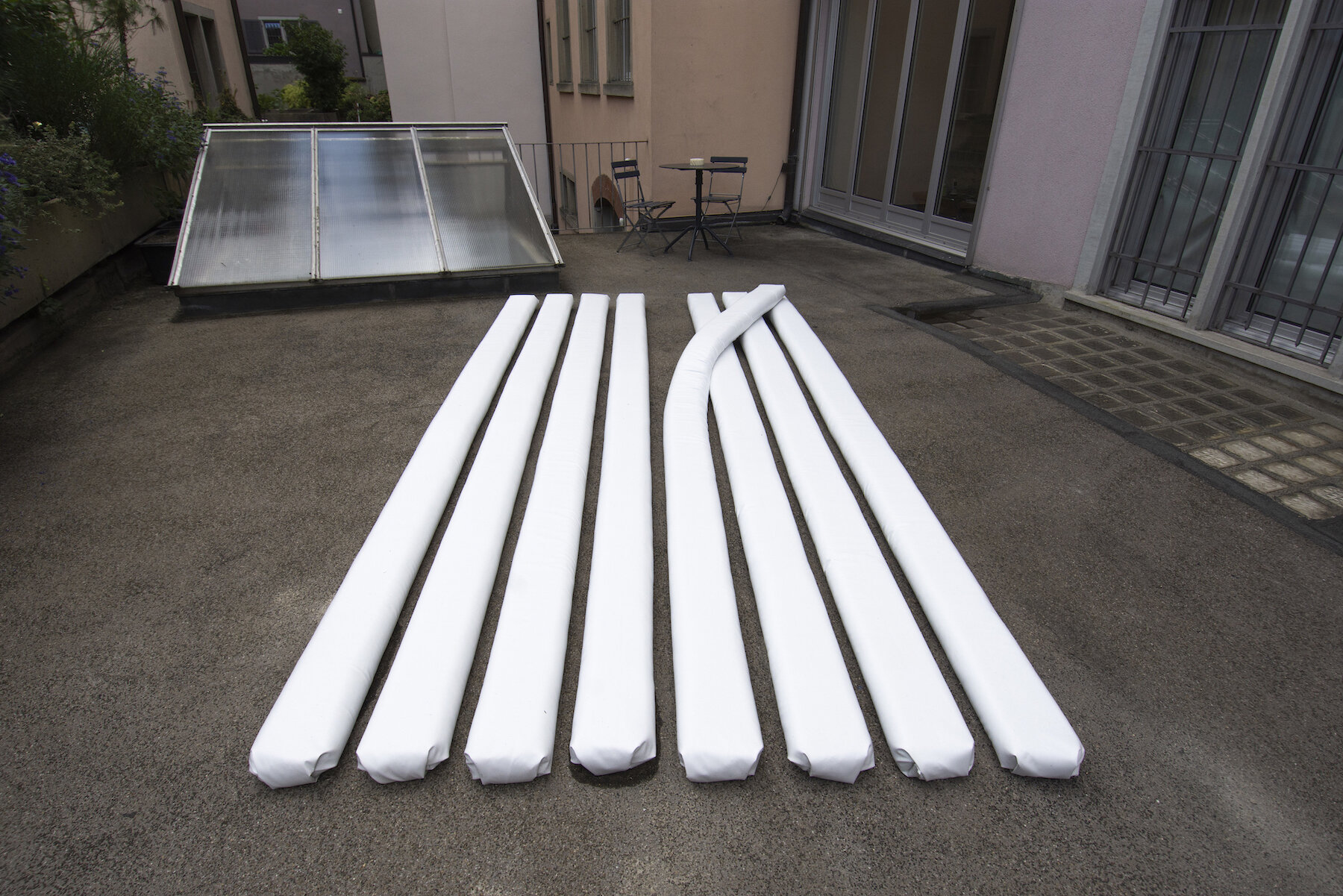
Explore the exhibition virtually below. Click the tabs or move the mouse to navigate through the space. Click on the works to open up a pop up window for more information and a high res image.
Exhibited works:
Press release (Deutsche Version unten verfügbar)
[PDF]
Lag includes a new body of work by Rüthemann that brings together the artist’s main gestural concerns – Minimalism, process-based art, humor, intervention and re-purposing.
Entering the gallery you are greeted by the soft and playful dance of color and light reflecting off the hi-tech fabric of a majestic ring-tower. Standing in the room awkwardly and almost as high as the ceiling, this sculptural intervention examines the spatial limits of the exhibition space. The reflective fabrics – more commonly used on safety jackets – are soft vessels filled with sand. The sandbag stands as a unit of construction developed for displaced people. Sand is almost liquid and shapeless when it's loose but becomes hard like concrete when stuffed and compressed in a limited space. Appearing near bursting-point, the earthquake-proof construction has a precarious, wobbly look, while the play of light on the surface attracts us almost magnetically and tempts us to touch it or overthrow it.
Further in five new works, each called quite literally Re-Position and each in a different color, are staged differently within the space. Made from a single piece of glossy silicone the works have the ground shape of a tube. This extremely simple shape is deformed by its own weight. It adapts to the architecture of its subsurface without, however, completely losing a certain tension. They just hold themselves upright or squeeze themselves into a corner... they slosh over the base or deliberately stand obliquely. The result is an almost poetic, emotional effect. Depending on their position they allude with a wink to a Bauhaus sculpture, an architectural model or the body or something else entirely. It's like a bow to what they represent with a mischievous smile on their face. They are living bodies rather than empty skins. Lazy ones, however. They are slackers. Almost as if they are playing dead. Passively present. Much like sit-in protesters who make themselves heavy when they get carried away. Due to the bounciness of the material, the work’s weight and tenuous grip, the installation of the sculpture has performative qualities, as the work is only completed by the final act of placement. In their formal simplicity, the works of the trained sculptor reveal a comprehensive knowledge of the source materials, whose properties and potentials Rüthemann explores.
Both works get their power from being heavy, soft and rather passive. A third new work is found on the terrace – eight long sand-filled poles lie almost perfectly next to each other – one of them bunked off. Fingers crossed doesn’t nod so much to Minimalism as to the formalisation of a gesture or saying. Rüthemann's work extends over the bend of the floor which also acts as a roof for the space underneath, and enters into a dialogue with the surrounding landscape.
The works play with an elemental dichotomy – the collision of high and low needs and technologies. As with all of Rüthemann's works, assumptions are being tested by new relationships; the viewer's expectations are considered and played with, equally subject to the artist's manipulation as the physical materials he uses.
pressetext
Ausstellung vom 17. September bis zum 18. DEZEMBER 2021
[PDF]
Lag (zu deutsch: "Verzögerung oder auch Röhrenüberzug") präsentiert einen neuen Werkkomplex von Rüthemann, der die zentralen formalen Interessen des Künstlers in sich vereint: Minimalismus und prozessbasierte Kunst treffen auf Humor, Intervention und Umfunktionierung.
Wenn man die Galerie betritt, wird man von einem sanften Tanz aus Farben und Licht empfangen, der vom High-Tech-Stoff eines majestätischen Turmes aus unzähligen Ringen reflektiert. Renitent türmt sich die Skulptur fast deckenhoch mitten im Raum auf und stellt damit die räumlichen Grenzen eines Ausstellungskontexts infrage. Die reflektierenden Stoffe, die normalerweise oft für Sicherheitskleidung verwendet werde, sind hier Hülsen, die mit Sand gefüllt sind. Der Sandsack steht dabei für einen Baustoff, der in Notsituationen oder Flüchtlingslagern eingesetzt wird. Sand, fast flüssig und formlos in seinem natürlichen Zustand, wird hart wie Beton, wenn er in einen begrenzten Raum gezwängt wird. Die Skulptur erweckt den Eindruck, zum Bersten gefüllt zu sein, und sieht dadurch wackelig, fast zerbrechlich aus, obwohl sie selbst ein Erdbeben überstehen würde. Die Lichtreflexe auf der glänzenden Oberfläche ziehen uns magnetisch an und scheinen uns herauszufordern, das Gebilde anzufassen oder es gar umzuwerfen.
Die nächsten fünf Skulpturen, alle in unterschiedlichen Farben, tragen den Titel Re-Position und wurden auch buchstäblich an einem jeweils anderen Platz im Raum unterschiedlich inszeniert. Die Arbeiten bestehen je aus einem einzelnen Stück glänzenden Silikons mit der Grundform einer Röhre. Diese Gestalt wird jedoch von ihrem eigenen Gewicht deformiert. Dabei passt sich das Gebilde zwar bis zu einem gewissen Grad an die Formen seines Untergrunds an, verliert aber dabei nicht komplett seine Grundspannung. Die Röhren halten sich aufrecht oder zwängen sich in eine Ecke; sie lappen über oder stellen sich bewusst quer. Der Effekt ist emotional, fast poetisch. Je nach Position scheinen sie mit einem Augenzwinkern auf eine Bauhaus-Skulptur zu verweisen, auf ein architektonisches Modell oder einen menschlichen Körper, oder auf etwas komplett anderes. Sie verneigen sich mit einem schelmischen Lächeln im Gesicht vor dem, was sie repräsentieren. Sie sind lebende Körper, keine leeren Hülsen. Aber sie sind gleichzeitig Drückeberger, passiv in ihrer Präsenz. Es scheint fast, als würden sie sich totstellen – wie Sitzstreik-Demonstranten, die sich bewusst schwer machen, wenn sie davongetragen werden. Das Gewicht der Skulptur, ihre federnde Materialität und ihre rutschige Griffigkeit verleihen der Installation eine performative Qualität, die erst im finalen Akt des Platzierens ihre volle Wirkung entfaltet. In ihrer formalen Einfachheit, offenbaren die Arbeiten des gelernten Bildhauers eine weitreichende Vertrautheit der Ausgangsmaterialien, deren Eigenschaften und Potenziale Rüthemann erforscht.
Beide Arbeiten entfalten ihre Kraft im Spannungsverhältnis von Schwere, Weichheit und Passivität. Eine dritte, neue Arbeit findet sich schließlich auf der Terrasse: Acht lange, sandgefüllte Hülsen liegen fast perfekt parallel zueinander – wäre da nicht eine, die aus der Reihe tanzt. Fingers crossed hat nicht so sehr mit Minimalismus zu tun wie vielmehr mit der Formalisierung von Gesten und Sprichwörtern. Rüthemanns Arbeit erstreckt sich über den asphaltierten Boden der Terrasse, die zugleich dem Raum darunter als Decke dient, und findet sich damit in einen Dialog mit ihrer Umgebung ein.
Alle Arbeiten spielen mit elementaren Dichotomien – dem Zusammentreffen von technischer Einfachheit und Komplexität, von höheren und niederen Bedürfnissen. Wie immer bei Rüthemanns Arbeiten werden dabei Vorannahmen mit neuen Verknüpfungen auf die Probe gestellt. Die Erwartungen der Betrachtenden werden vorausgeahnt und bieten die Basis für neue Hinterfragungen – und fallen damit genauso der Manipulation des Künstlers zum Opfer wie die Materialien, die er benutzt.
